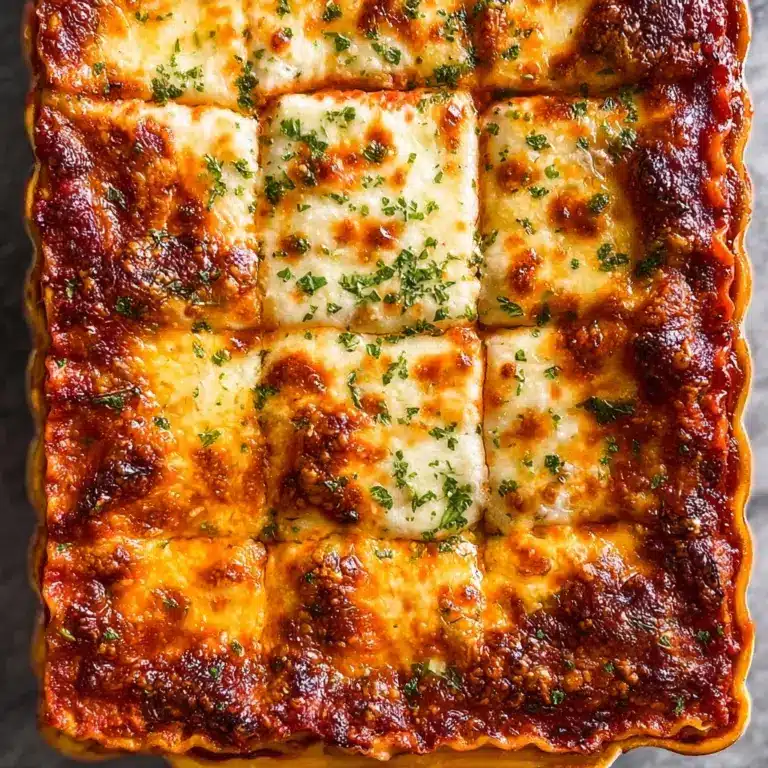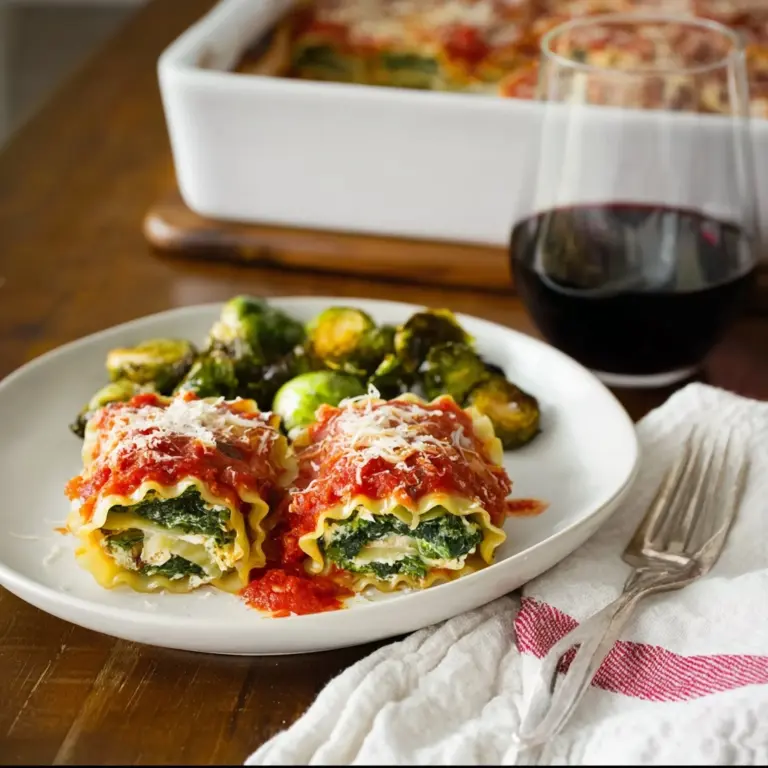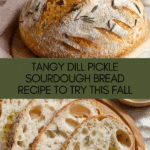Tangy Dill Pickle Sourdough Bread Recipe
There is something magical about homemade bread that carries both flavor and story in every bite, and the Tangy Dill Pickle Sourdough Bread is no exception. This bread perfectly balances the classic tang of sourdough with the zesty brightness of dill pickle brine and the delightful crunch of diced pickles. Each loaf is a crunchy crust-enveloped treasure full of unexpected tang and freshness, making it an unforgettable treat for any bread lover ready to elevate their baking game.
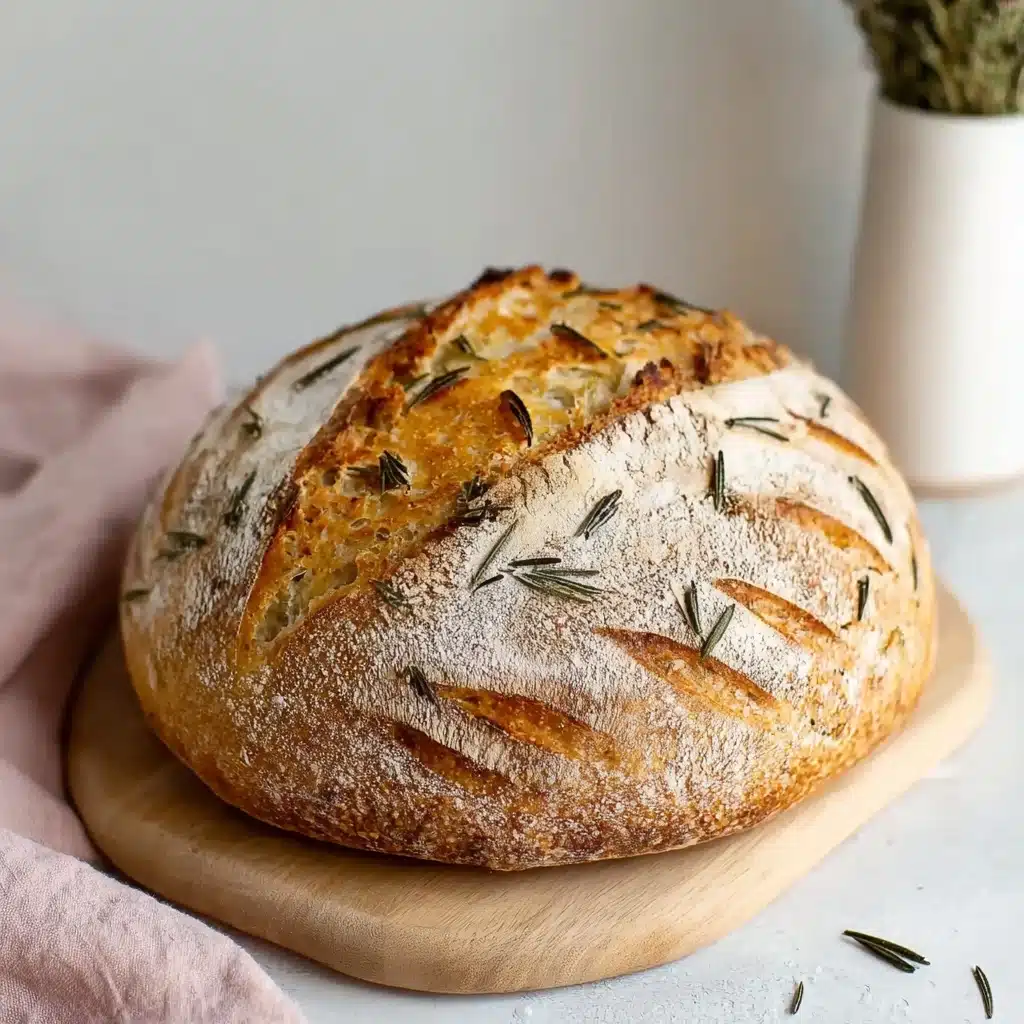
Ingredients You’ll Need
Gathering your ingredients is simple, yet each one plays a crucial role in building the irresistible character of Tangy Dill Pickle Sourdough Bread. From the lively sourdough starter providing depth, to the briny punch from pickle juice, all contribute unique layers of taste and texture.
- Active sourdough starter (50 grams): This is the heart of your bread, giving it that signature tang and airy crumb.
- Filtered water, warmed (260 grams): Warm water helps energize the starter and activate yeast during fermentation.
- Brine from dill pickles (30 grams): Adds the essential tangy note that sets this sourdough apart from the usual.
- Organic white bread flour (375 grams): Provides the structure and chewiness for that perfect crust and crumb.
- Whole wheat flour (35 grams): Offers a subtle nutty flavor and adds to the loaf’s wholesome texture.
- Fine sea salt (7 grams): Enhances the flavors and helps control fermentation.
- Diced dill pickles (80 grams): These add delightful bursts of crispness and pickle flavor inside the bread.
- Fresh dill, finely chopped (1 1/2 tablespoons): Infuses an herby freshness that complements the tangy pickle perfectly.
How to Make Tangy Dill Pickle Sourdough Bread
Step 1: Mix and Initial Rest
Start by mixing the active sourdough starter with warm water and pickle brine until fully combined; this blend will kickstart the sourdough’s fermentation with that signature tang from the pickle brine. Then, incorporate the white and whole wheat flours until the dough looks rugged but no dry flour remains. Sprinkle on the salt, cover with a damp cloth, and let it rest for 40 minutes. This initial rest lets the flour fully hydrate and begins gluten development, setting a strong foundation for your loaf.
Step 2: Knead and Incorporate Salt
After the rest, knead the dough for two minutes to evenly work the salt in, crucial for flavor and dough strength. Follow this by performing the first stretch and fold—an essential technique to stretch the gluten strands, which builds elasticity without heavy kneading. Then cover the bowl and let the dough rest for another 30 minutes, allowing those gluten webs to relax and develop more tension.
Step 3: Add Flavorings and Continue Stretch and Fold
Now it’s time to add the stars of our loaf: diced dill pickles and fresh dill. Sprinkle them evenly over the dough, making sure you reach the edges for even flavor distribution. Perform another stretch and fold to incorporate these mix-ins smoothly, then rest for 30 minutes. The pickles will infuse their moisture and tang gently into the dough while the dill brightens the entire mix.
Step 4: Complete Stretch and Fold Sequences
To build strength and structure in the dough, perform two more stretch and fold cycles, each separated by a 30-minute rest. This method encourages a light, open crumb and a crisp crust. Each fold stretches the dough further, while the rest lets it relax, balancing strength with extensibility for that perfect bloom when baked.
Step 5: Bulk Fermentation and Shaping
Once your dough has undergone its strengthening routine, cover it and let it bulk ferment at room temperature until it rises by about 75%. This stage is where the magic of rising brings out the tangy flavor and airy texture the sourdough is famous for. Depending on your kitchen’s temperature, this can take up to 4 hours. When it looks glossy, bubbly, and slightly domed, gently turn it out onto a floured surface. Let it rest briefly to relax before shaping it nicely into a round or oval, then place it seam-side up in a floured banneton lined with linen. Cover and prepare for the final rise.
Step 6: Final Proof and Baking
The final proof can happen overnight in the fridge, which enhances flavor complexity and solidifies loaf shape, or at room temperature for a quicker turnaround. Before baking, preheat your oven to 450°F with a Dutch oven inside to create the most ideal baking environment that traps steam for a crisp crust. Turn your dough out, score it to help it expand during baking, then place it into the hot Dutch oven. Bake covered for 25 minutes, uncover and lower temperature slightly, finishing with another 20 minutes until golden brown and fragrant.
Step 7: Cooling
Resist the temptation to slice too early! Rest your Tangy Dill Pickle Sourdough Bread for at least an hour on a wire rack to let the crumb set and allow any residual steam to escape. This step ensures that every bite is perfectly textured—moist yet not gummy. Once cooled, you’re ready to enjoy all the vibrant flavors from that tangy brine to the fresh dill!
How to Serve Tangy Dill Pickle Sourdough Bread
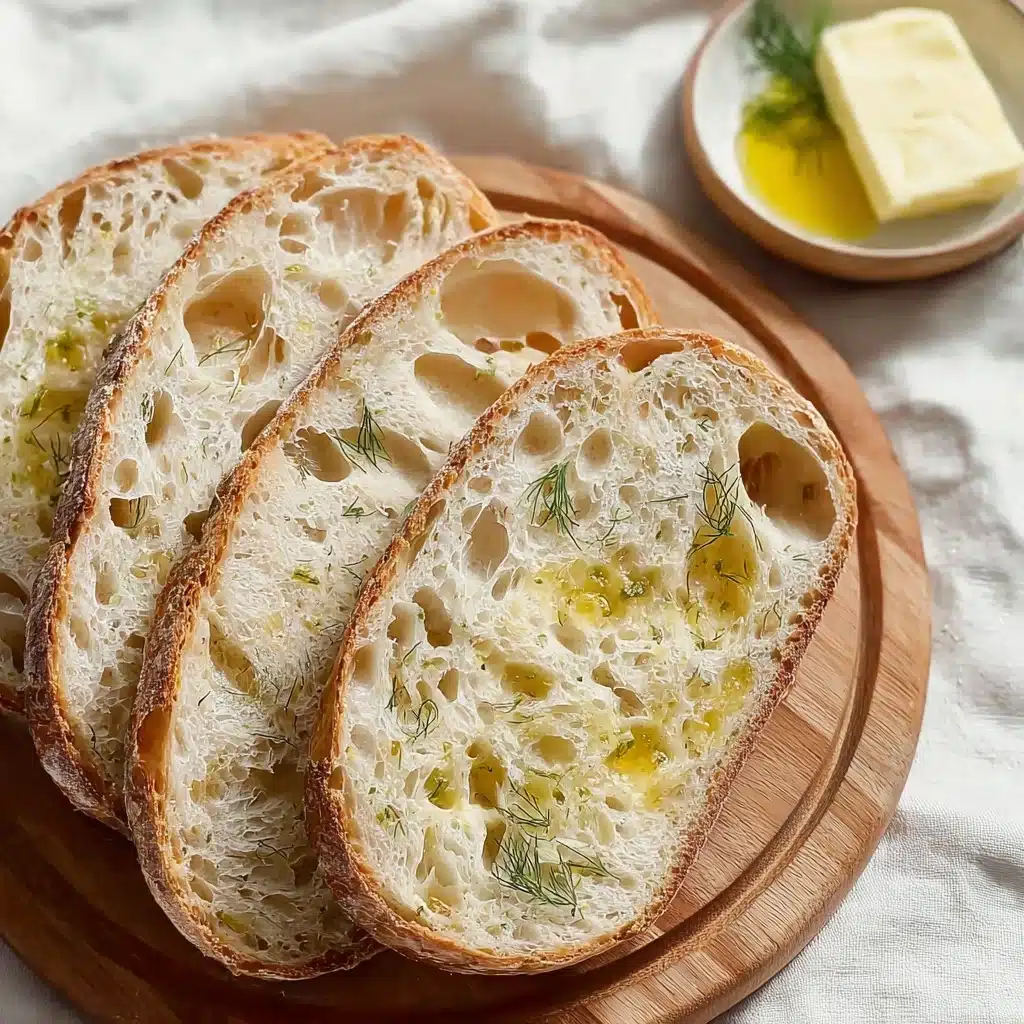
Garnishes
Elevate your bread serving with simple garnishes that complement its unique flavor. A light brush of melted butter and a few sprigs of fresh dill on the side invite the senses to focus on the dill’s herbaceous notes. You can also add a sprinkle of coarse sea salt for an extra salty crunch that contrasts beautifully with the tangy crumb.
Side Dishes
This bread pairs amazingly well with creamy soups like potato leek or classic tomato, as the tang cuts through richness wonderfully. For a heartier approach, enjoy alongside charcuterie boards featuring sharp cheeses and cured meats or alongside savory egg salad where the bright flavors of the bread provide a delicious counterpoint.
Creative Ways to Present
Why not turn your Tangy Dill Pickle Sourdough Bread into a standout sandwich? Think thick slices filled with melted Swiss, thinly sliced turkey, and a smear of Dijon mustard. Or toast thick slabs and top with herbed cream cheese and cucumber ribbons for a fresh, sophisticated snack. This bread’s versatility means you can let your imagination create countless delicious presentations.
Make Ahead and Storage
Storing Leftovers
Keep your bread fresh by wrapping it loosely in a clean kitchen towel and storing it at room temperature inside a bread box or airtight container. This will maintain its crusty exterior and keep the crumb moist for up to 3 days. Avoid refrigerating bread as it tends to dry out and become stale faster.
Freezing
If you want to enjoy your Tangy Dill Pickle Sourdough Bread later, freeze it in slices or whole wrapped tightly in plastic wrap and then aluminum foil to prevent freezer burn. Properly stored, your loaf can last up to 3 months in the freezer without losing flavor or texture.
Reheating
To revive your bread’s fresh-from-the-oven crispness, pop slices directly onto a hot skillet or in a toaster oven until the edges are golden and toasty. For a whole loaf, heat in a 350°F oven for 10-15 minutes, removing any plastic wrapping first. This restores the delightful crust and breathes life back into the crumb.
FAQs
Can I use bottled pickle brine instead of homemade?
Yes, bottled pickle brine works well as long as it’s from dill pickles and not flavored with sweeteners or spices that might alter the bread’s taste. Just make sure to choose a brine that has a nice tangy balance for the best results.
What if I don’t have a Dutch oven to bake this bread?
You can bake the bread on a baking stone or heavy baking sheet, and add steam by placing a pan of hot water in the oven during the first 15 minutes of baking. This will help develop a crusty exterior similar to a Dutch oven bake.
How important is the rest time between stretch and folds?
Rest periods allow the gluten network to relax and strengthen, making the dough easier to handle and helping trap air bubbles that give sourdough its open crumb. Skipping or shortening these rests can lead to a dense loaf, so it’s best to follow the timing.
Can I substitute fresh dill with dried dill?
While fresh dill provides a bright and lively flavor, dried dill can be used if fresh isn’t available. Use about one-third the amount of dried dill as fresh, but know the flavor will be more subtle, so adjust according to your taste.
Is the diced pickle moisture a concern for the dough?
It’s important to pat the diced pickles dry before adding them to avoid extra moisture that could weaken the dough and affect baking. The bread’s texture benefits from this small step, preserving a sturdy yet tender crumb.
Final Thoughts
The Tangy Dill Pickle Sourdough Bread is a celebration of unexpected flavors and classic technique coming together in perfect harmony. Once you try making this unique loaf, you’ll find it hard to go back to ordinary bread. It’s a joyful baking adventure worth sharing with family and friends, so grab your ingredients and enjoy the delicious journey!
Print
Tangy Dill Pickle Sourdough Bread Recipe
- Total Time: 6 hours 15 minutes (including rising and bulk fermentation)
- Yield: 1 loaf (about 800 grams) 1x
- Diet: Vegetarian
Description
This Tangy Dill Pickle Sourdough Bread combines the classic tanginess of sourdough with a flavorful twist of dill pickle brine and fresh dill. Incorporating diced dill pickles into the dough adds bursts of crunchy, tart notes throughout the loaf, making it a unique, savory bread perfect for sandwiches or as a flavorful accompaniment to meals.
Ingredients
Starter and Liquids
- 50 grams active sourdough starter
- 260 grams filtered water, warmed to about 85°F
- 30 grams brine from dill pickles
Flours and Salt
- 375 grams organic white bread flour
- 35 grams whole wheat flour
- 7 grams fine sea salt
Flavorings and Mix-ins
- 80 grams diced dill pickles (patted dry to remove moisture)
- 1 1/2 tablespoons fresh dill, finely chopped
Instructions
- Mix and Initial Rest: In a large bowl, combine the active sourdough starter, warmed filtered water, and dill pickle brine. Use a fork to mix until the starter is well dispersed. Add in the white bread flour and whole wheat flour, mixing with a spatula then your hands until a shaggy dough forms with no dry flour remaining. Sprinkle the salt over the top, cover with a damp cloth, and let the dough rest for 40 minutes.
- Knead and Incorporate Salt: After resting, knead the dough for about 2 minutes to fully incorporate the salt. Perform the first stretch and fold by stretching a portion of the dough upward and folding it over itself. Cover again and let rest for 30 minutes.
- Add Flavorings and Continue Stretch and Fold: Evenly sprinkle the diced dill pickles and fresh chopped dill over the dough’s surface, reaching the edges. Perform another stretch and fold to incorporate these mix-ins. Cover and rest for 30 minutes.
- Complete Stretch and Fold Sequences: Perform two additional sets of stretch and folds, each followed by a 30-minute rest, totaling four cycles. This builds the dough’s gluten structure and fully integrates ingredients.
- Bulk Fermentation and Shaping: Cover the dough and allow it to bulk ferment at about 74°F until it rises approximately 75%, around 4 hours. The dough should be slightly glossy and bubbly but not fully doubled. Transfer to a floured surface and rest for 10-15 minutes. Shape the dough as desired, then place it seam-side up in a flour-dusted, linen-lined banneton. Cover with a damp cloth or shower cap and allow the final rise.
- Final Proof and Baking: Proof the shaped dough either in the refrigerator overnight (up to 12 hours) for ease of scoring and shape retention or at room temperature for about 1 1/2 hours until puffy. Preheat the oven to 450°F with a Dutch oven inside. Transfer the dough onto parchment paper, flipping it seam-side down. Score the top deeply (at least 1/2 inch) to allow steam to escape. Place the dough with parchment into the hot Dutch oven, cover, and bake for 25 minutes. Remove the lid, reduce heat to 435°F, and bake an additional 20 minutes until crust is golden and crackly.
- Cooling: Remove bread from oven and cool completely on a wire rack for at least one hour before slicing. This allows the crumb to set and prevents gumminess from trapped steam. Enjoy your tangy, dill-infused sourdough bread!
Notes
- Use filtered water warmed to about 85°F to help activate the starter and facilitate fermentation.
- Diced pickles should be patted dry to remove excess moisture, preventing soggy dough.
- Brine from dill pickles adds tang and depth — adjust the amount for more or less pickle flavor.
- Final proofing can be done overnight in the fridge for better flavor development and easier shaping.
- Use a Dutch oven to replicate steam conditions for a crusty sourdough exterior.
- Allow full cooling before slicing to achieve optimal texture.
- Prep Time: 1 hour 30 minutes
- Cook Time: 45 minutes
- Category: Bread
- Method: Sourdough Baking with Stretch and Fold Technique
- Cuisine: American
Nutrition
- Serving Size: 1 slice (approx. 80 grams)
- Calories: 160 kcal
- Sugar: 1.2 g
- Sodium: 350 mg
- Fat: 0.6 g
- Saturated Fat: 0.1 g
- Unsaturated Fat: 0.4 g
- Trans Fat: 0 g
- Carbohydrates: 33 g
- Fiber: 2 g
- Protein: 5.5 g
- Cholesterol: 0 mg
Keywords: sourdough bread, dill pickle sourdough, tangy bread, homemade bread recipe, sourdough with dill, fermented bread, artisan bread


